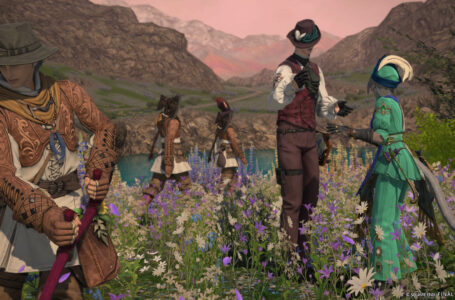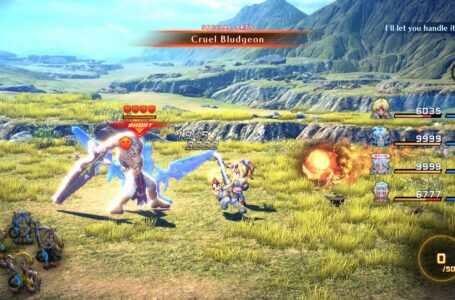Have you played… Final Fantasy Adventure?
I’ve been making an effort to attack my backlog of late, including working my way through some things that I was really excited to pick up on their original release, but which I somehow never got around to. One of those things is Square Enix’s Collection of Mana, which includes Final Fantasy Adventure, Secret of Mana and the first official English localisation of the original SNES version of Trials of Mana. And since, to my shame, I’ve never even played a Mana game, let alone beaten one, I thought I’d start right at the beginning.
Final Fantasy Adventure first released in 1991 for Nintendo’s immensely popular Game Boy handheld, and it has the dubious honour of being one of the most-renamed games in history.
Originally known as Seiken Densetsu: Final Fantasy Gaiden in Japan, it became known as Final Fantasy Adventure on its North American release and Mystic Quest (no relation to Final Fantasy Mystic Quest) on its European release. Many years later, it got a remake for Game Boy Advance, where it became known as Sword of Mana, and even later still it got another remake for mobile phones and PlayStation Vita, where it was renamed Adventures of Mana.
In the interests of keeping things simple, we’ll be referring to it as Final Fantasy Adventure throughout, since that’s the most frequent means through which Collection of Mana refers to it — as well as, seemingly, the most well-known name of the game on the Internet in general.
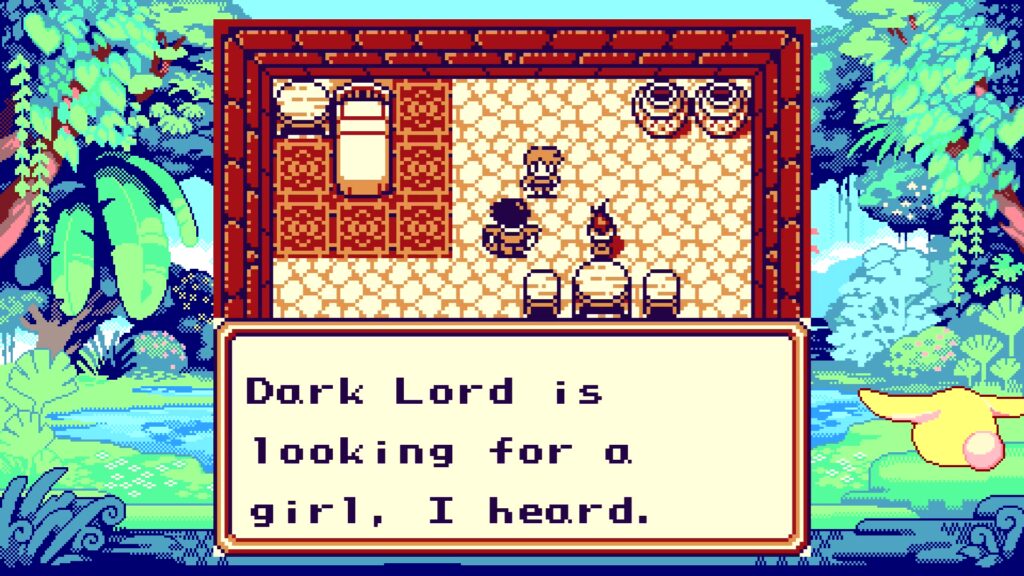
A lot of people assume that Final Fantasy Adventure, despite its name, actually isn’t a Final Fantasy game — but as you’ll see from the “Final Fantasy Gaiden” subtitle of the Japanese original, this isn’t true. In most cases, the people who believe this are thinking of the Final Fantasy Legend series from a similar era, which are actually SaGa games — the first SaGa games, in fact — rather than Final Fantasy titles.
But yes, Final Fantasy Adventure is indeed a Final Fantasy spinoff, along with being the first installment in the Mana series. Secret of Mana split the Mana series off into its own discrete thing, of course, but Final Fantasy Adventure can absolutely be considered part of the Final Fantasy series — it has recognisable character sprites based on the original NES designs, it has chocobos, it has an airship and it has an overall similar vibe to the Final Fantasy series as a whole.
There’s one big difference, though: it’s an action RPG. This commonly causes it to be compared to Nintendo’s own The Legend of Zelda series, which, of course, had a wonderful entry on the Game Boy, but in fact the games have some significant differences. Most notable of these is the fact that while Zelda, for the most part, ties character progression to narrative progression almost completely directly, in Final Fantasy Adventure the whole experience is still built atop simple stat-based RPG mechanics.
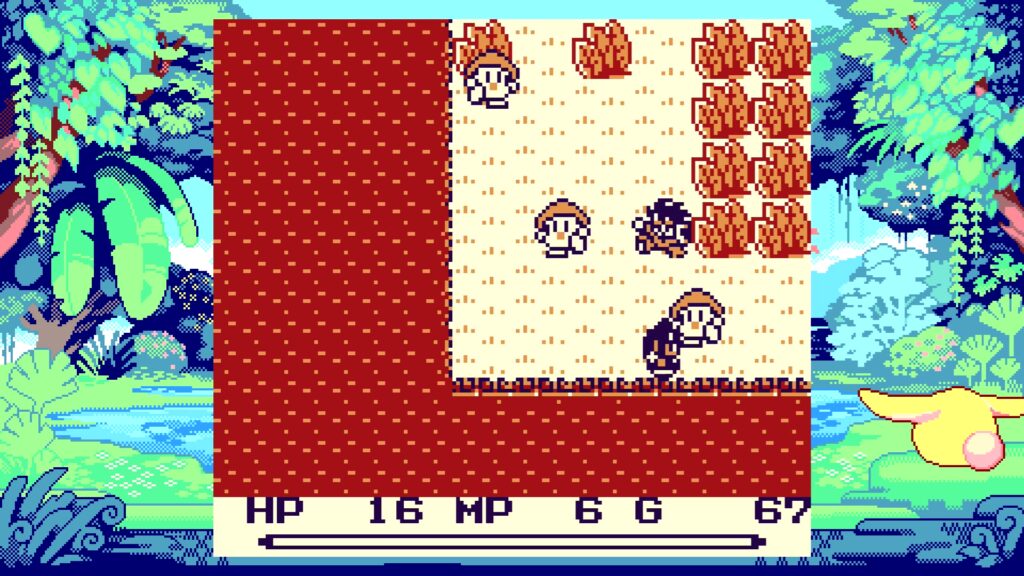
To put it another way, in Zelda you grow in power by acquiring items and heart containers at specific points in the story, whereas in Final Fantasy Adventure you grow in power by earning experience points and gaining levels — though there are also various items of equipment you can both buy and acquire at specific points in the overall game structure.
In a pleasing bit of customisability, you have a limited amount of control over your stat growth in Final Fantasy Adventure, too; while practically speaking building a balanced character is probably the best approach, since both physical and magical attacks are useful throughout the game, there’s nothing stopping you doing a “challenge run” of sorts by focusing exclusively on a particular stat.
In Final Fantasy Adventure, you play the part of an enslaved gladiator who, sick of watching his friends die in front of him, decides to break free and see if he can’t do something about the oppression under which the people of the land are living. Unfortunately, almost immediately after escaping, he’s set upon by the tyrannical Dark Lord and booted off a waterfall.
Fortunately, he survives, and subsequently comes into contact with a young girl holding a mystical pendant. From here, it’s up to you to discover the truth behind the power of Mana, travel the realm, find all manner of useful things, give Dark Lord a good kicking and, you know, save the world, that sort of thing.
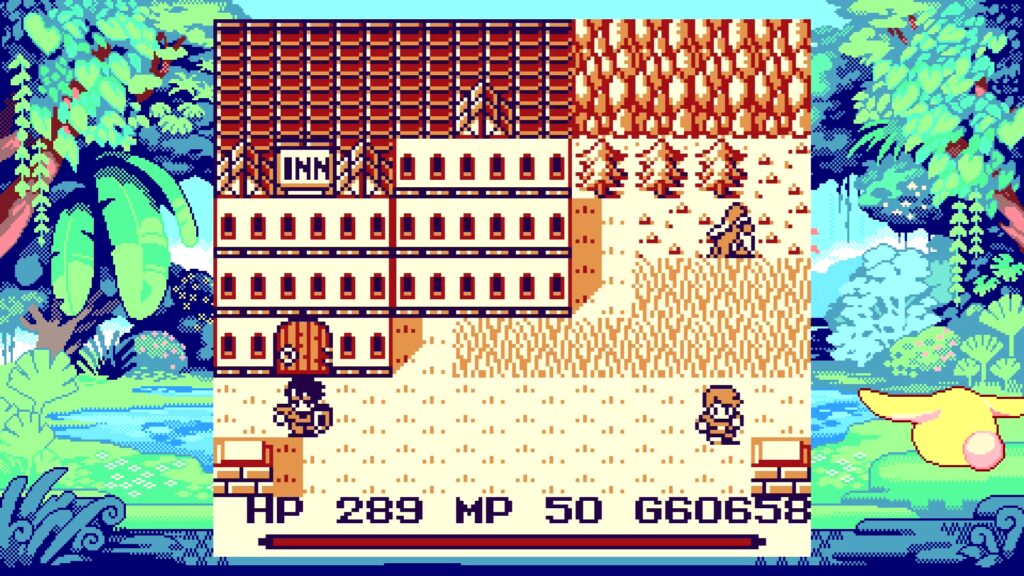
Narratively speaking, Final Fantasy Adventure is relatively minimal, as you might expect from a relatively early Game Boy title, but there’s a definite charm to it. The story clearly has some ambition in its themes — and it has a body count that rivals the notorious Final Fantasy II.
The translation to English is endearingly wonky, demonstrating a peculiar aversion to the word “the”, but before long this becomes a charm point as much as it is a technical weakness. The game gets its point across well and makes you care about its characters with a relatively minimal amount of text coupled with its simple but pleasing visuals.
In terms of gameplay, Final Fantasy Adventure unfolds more like a Zelda game than a Final Fantasy game in that the world is represented in its “real” scale rather than taking you from place to place on an “overworld” map. Traversing the environment and figuring out how to get to places you can see but not reach is an important part of the game’s overall challenge — and much like in Zelda, acquiring the right tools to get past various obstacles is an important part of the overall progression.
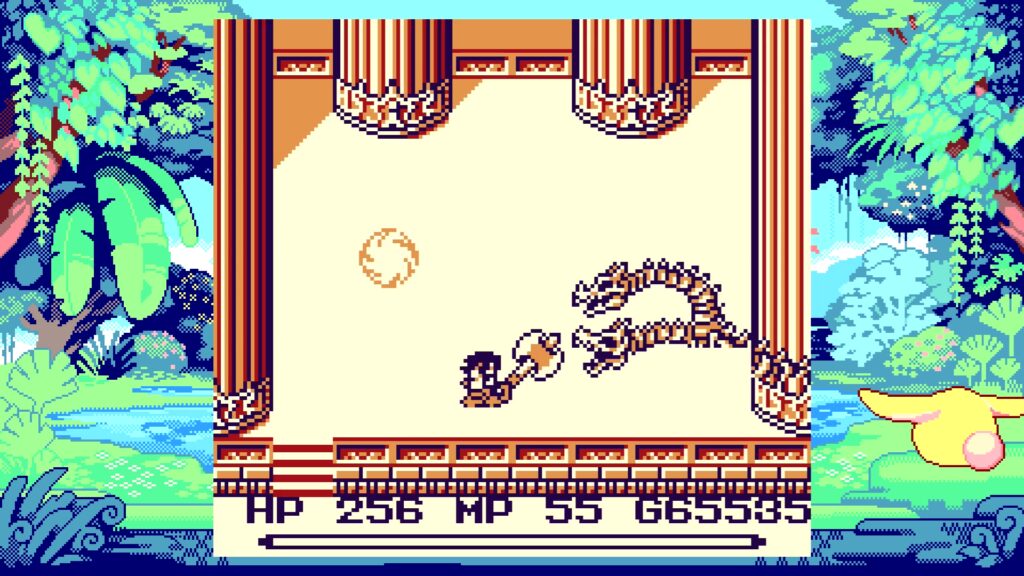
Combat is simplistic but functional; enemies tend to mill around the various rooms fairly aimlessly rather than demonstrating any sort of intelligence, but you’ll often find yourself having to use the right weapon or magic for different enemies, elevating the game above a simple hack-and-slash affair. The weapons, too, all function in different ways, and different types all have a unique chargeable “MAX” attack that can be triggered by waiting for the on-screen “Willpower” bar to fill up. Plenty of variety to be enjoyed.
Dungeons unfold as a series of square-shaped rooms, which might not sound all that interesting, but the way in which they’re connected together and gimmicks are added makes them a consistent pleasure to explore. At times, Final Fantasy Adventure takes on something of a “dungeon crawler” feel as you attempt to make your way through these various labyrinths, solving puzzles that become increasingly complex as you progress through the game.
One slightly frustrating aspect of Final Fantasy Adventure in this regard is that there are a couple of places where it’s possible to softlock yourself. Keys that open locked doors are consumable items, and unlike in Zelda you have to purchase them from shops rather than acquiring them at set points in dungeons. This means you can run out of keys, potentially trapping yourself in a location — since once you leave a room with a locked door you’ve previously opened, the door shuts again, requiring another key.
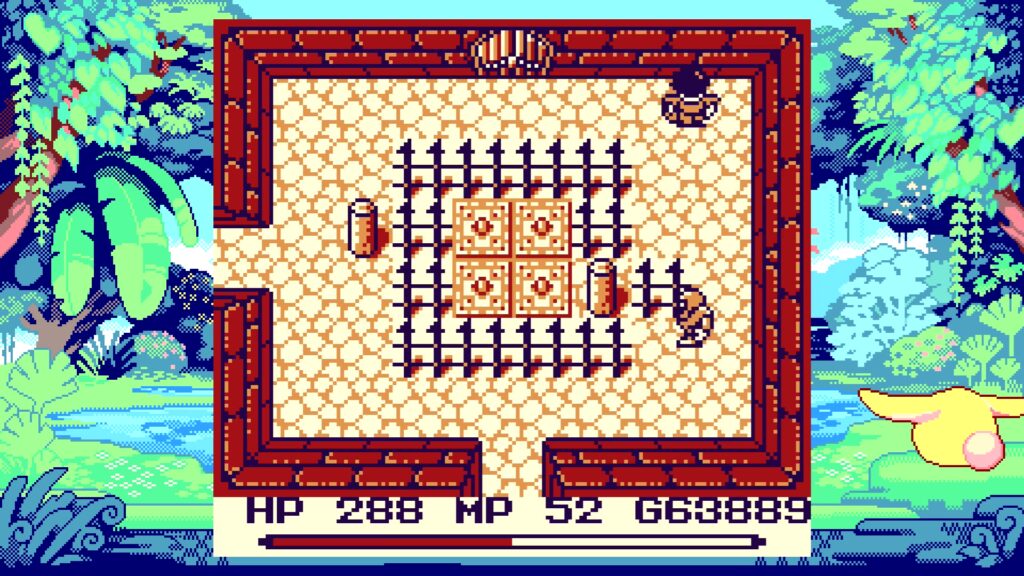
Keys are easy to come by and cheap, so you should keep several stacks of them in your inventory at all times — and thankfully, there’s only one real location in the game (Glaive Castle) that tends to trap players in this way. But it’s still a bit of a fatal design flaw; make sure you always save before entering a new dungeon, just in case you find yourself in this situation!
Aside from this issue — colloquially referred to by some Final Fantasy Adventure fans as “the newbie trap” — Final Fantasy Adventure is a thoroughly lovely time. Progression is paced well so that you never feel like you need to grind, but you also grow noticeably in power as the game progresses. Arguably a little too much so at times; the game’s Cure spell, which you get very early on, trivialises most of the game’s boss battles, which is a bit of a shame, but certainly not enough to ruin the experience.
What we have here is a game with a few rough edges that had a ton of ambition for both the era in which it was released and the humble platform it was running on. It’s a reminder that the Final Fantasy series as a whole has always been gleefully experimental and willing to try new things — plus it went on to birth a whole new series that is widely beloved in its own right.
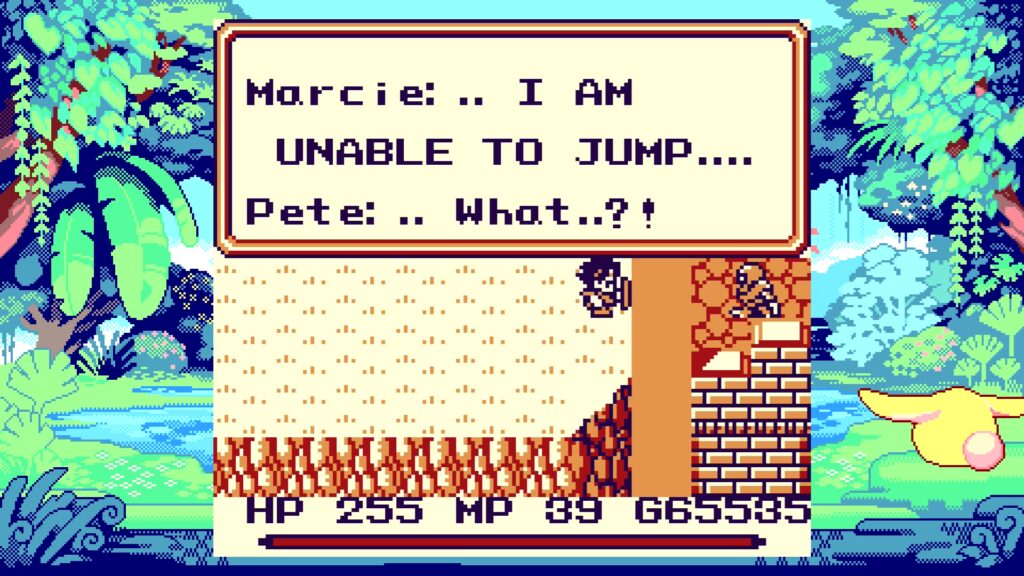
It may look like a far cry from the graphical spectacle that the Final Fantasy series became known for in its later years — but it’s definitely still well worth a play today. And Collection of Mana is a convenient, accessible means of doing so — so what are you waiting for?
Collection of Mana is available now for Nintendo Switch.
Join The Discussion
Rice Digital Discord
Rice Digital Twitter
Rice Digital Facebook
Or write us a letter for the Rice Digital Friday Letters Page by clicking here!
Disclosure: Some links in this article may be affiliate links, which means we may earn a small commission if you make a purchase after clicking on them. This is at no additional cost to you and helps support Rice Digital!
- Letter from the Editor: passing the torch - June 30, 2023
- Super Woden GP 2 is looking promising - June 30, 2023
- Inti Creates is making a 32 bit-style Love Live action platformer - June 26, 2023




